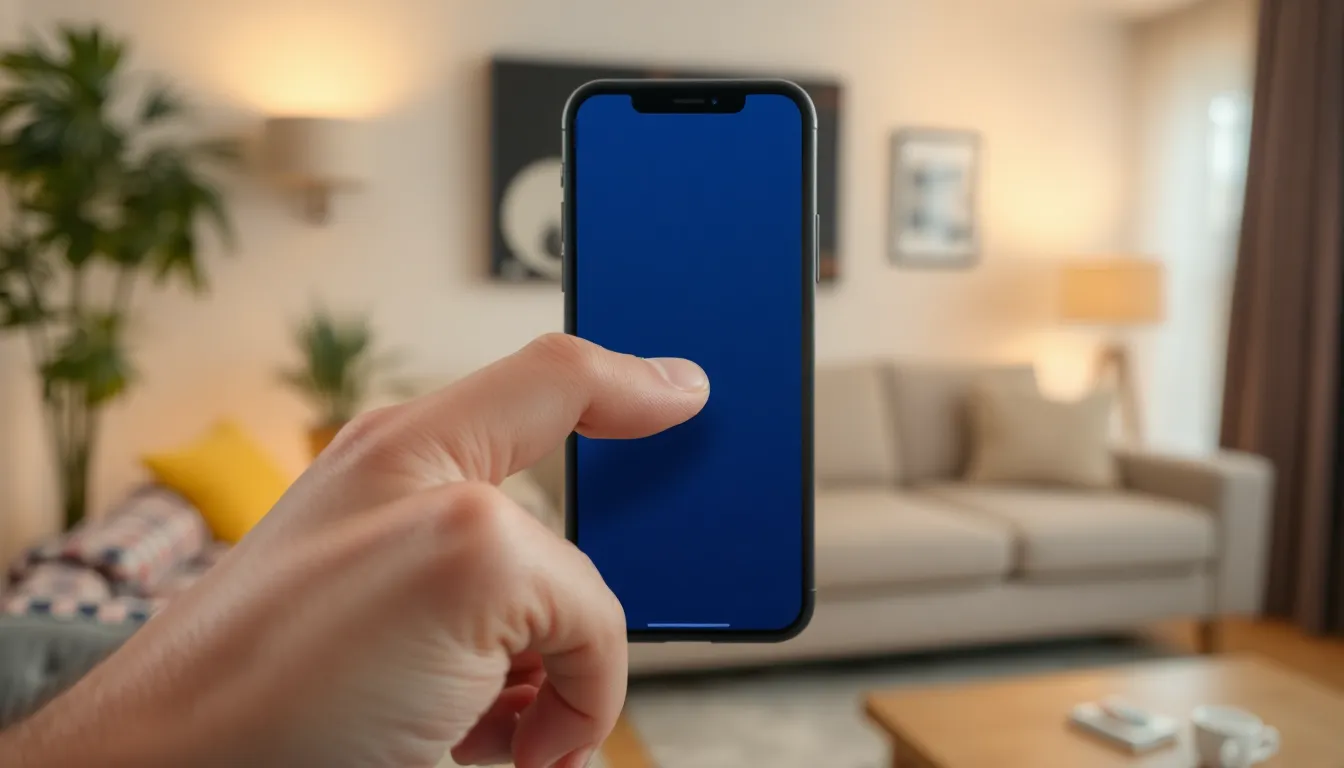Table of Contents
ToggleEver find yourself in a situation where your iPhone feels like it’s whispering sweet nothings instead of blasting your favorite tunes? You’re not alone. Many have experienced the frustration of cranking up the volume only to be met with a sound that’s more ‘murmur’ than ‘melody.’ Whether you’re trying to catch the latest podcast or groove to a killer playlist, knowing how to turn up the volume on your iPhone can make all the difference.
Understanding Volume Settings on iPhone
iPhone users encounter different volume settings that significantly impact audio experience. Mastering these settings enhances sound quality when listening to music or podcasts.
Media Volume
Media Volume controls audio for music, videos, and games. It adjusts the loudness of content played through apps like Apple Music or YouTube. To change it, use the volume buttons on the side of the iPhone during playback. This setting can also be accessed via the Control Center. Swiping down from the top right (or up from the bottom on older models) reveals a volume slider. Adjusting the slider increases or decreases the media volume quickly.
Ringer Volume
Ringer Volume sets the loudness of incoming calls and alerts. This level determines how audible notifications are for messages or reminders. It can also be altered using the volume buttons, but in standby mode, the ringer volume acts independently. Users can manage it through the Settings app by navigating to Sounds & Haptics. There, a dedicated slider allows fine-tuning of ringer volume. Enabling “Change with Buttons” allows the ringer volume to be adjusted using physical buttons seamlessly.
Methods to Increase Volume

Increasing the volume on an iPhone can significantly enhance audio experiences, whether it’s music, podcasts, or videos. Several methods can facilitate adjusting the sound levels effectively.
Using Volume Buttons
Volume buttons located on the side of the iPhone provide a quick way to increase sound. Users can simply press the upper button to boost the volume instantly. This method works for both media playback and ringer volume. The audio level displays on the screen as adjustments are made, making it easy to monitor changes. If the device remains silent after pressing the buttons, checking if the device is muted may be necessary.
Adjusting Settings in Control Center
Accessing the Control Center allows more precise volume adjustments. Users can swipe down from the top-right corner (or up from the bottom on older models) to reveal the controls. The volume slider permits adjustments for media directly within this menu. Dragging the slider to the right increases sound levels effectively. This method ensures that users can quickly manage audio settings without navigating through multiple menus in the Settings app.
Additional Tips for Enhanced Audio
Improving audio quality on an iPhone involves additional settings and considerations for a better experience.
Using Equalizer Settings
Using the equalizer settings can significantly enhance audio experiences. Access the equalizer through the Music app under Settings. Various presets adjust sound quality based on the genre of music. For example, selecting the “Jazz” preset boosts highs while “Rock” emphasizes the bass. Experimenting with these settings may lead to a more enjoyable listening experience. Custom settings allow users to tailor audio preferences according to individual tastes. Adjustments can make sound clearer and more immersive.
Choosing the Right Audio Outputs
Choosing the appropriate audio output device plays a crucial role in overall sound quality. Using high-quality headphones improves clarity and enhances bass response. Wireless speakers provide a more expansive soundstage, perfect for gatherings. Options like AirPods offer additional features, such as noise cancellation and spatial audio. Connecting to external speakers or home audio systems maximizes volume potential, ensuring louder sound. Understanding device compatibility helps select the right output method, optimizing the listening experience.
Troubleshooting Low Volume Issues
Low volume issues can often be resolved with a few troubleshooting steps. Users can follow a systematic approach to ensure their audio experience improves.
Checking for Software Updates
Software updates regularly include bug fixes and performance improvements. Navigate to Settings, select General, then tap on Software Update. If an update is available, users must download and install it. Completing this process can address various audio-related glitches that affect volume levels. Ensuring the device is running the latest iOS version enhances compatibility with apps and sound features.
Restarting the Device
Restarting the iPhone can effectively resolve minor software issues impacting volume. To do this, press and hold the side button along with the volume button until the slider appears. Slide to power off, then hold the side button again to turn it back on. This simple action can refresh the system and fix any temporary settings that may hinder audio performance. A restart typically clears cached data, leading to improved device functionality and volume control.
Mastering volume control on an iPhone enhances the overall audio experience. By understanding the various volume settings and utilizing quick adjustment methods like the side buttons and Control Center, users can easily elevate sound to their desired level.
Exploring equalizer settings and choosing quality audio output devices further enriches listening enjoyment. For persistent low volume issues, checking for software updates and restarting the device can often resolve glitches.
With these strategies in hand, users can ensure their iPhone delivers clear and powerful sound for music, podcasts, and more.




